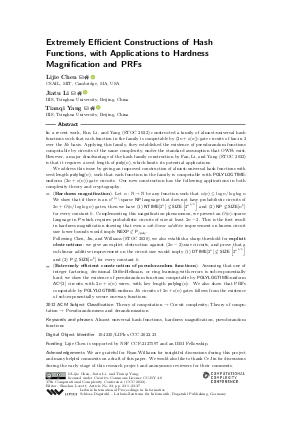LIPIcs.CCC.2022.23.pdf
- Filesize: 1.19 MB
- 37 pages

 Creative Commons Attribution 4.0 International license
Creative Commons Attribution 4.0 International license



Feedback for Dagstuhl Publishing